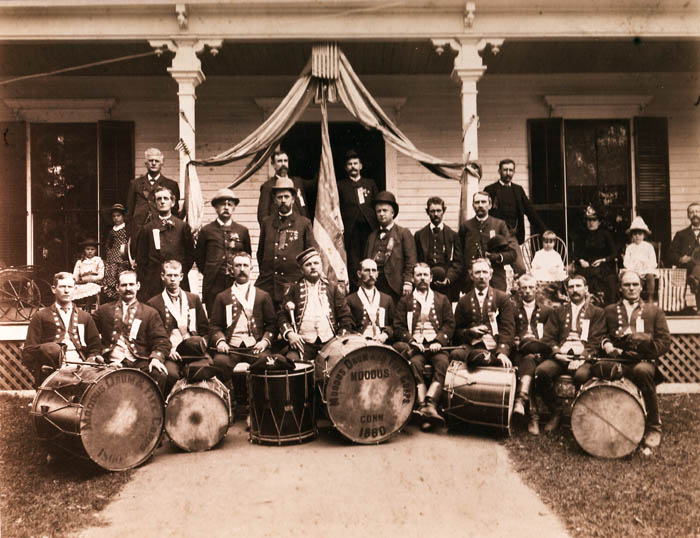Red Bridge: Where Power, Industry, and Two Towns Met
- David Bourcier
- Nov 22
- 5 min read
Updated: Nov 30
Long before electric lines stretched across the valley, the bend of the Chicopee River at Red Bridge played a defining role in the growth of both Ludlow and the northwest corner of Wilbraham. In Ludlow, the manufactory first appeared around 1815, taking advantage of the steady current at a point once known as Putt’s Bridge, an area where Ludlow, Springfield, and Wilbraham merge, named for its builder, Eli Putnam. By 1821, the site had been reorganized as the Springfield Manufacturing Company, which erected a sturdy stone mill on the north bank of the river.

The first wave of industry at Putt’s Bridge began to fade by 1848, though the firm of Wood & Merritt managed to keep the mills running for several more years. In 1856, the site entered a new era when it was absorbed into the newly formed Ludlow Manufacturing Company. What followed was a period of rapid expansion: new buildings rose along the river, modern machinery was installed, and a growing workforce transformed the landscape. A true village began to take shape around the mills, driven by the company’s remarkable pace of development. Streets were laid out, houses were built, and civic improvements arrived so quickly that the company ultimately reorganized as Ludlow Manufacturing Associates, a structure that enabled them to guide not just industrial operations, but the development of an entire community. In time, the Ludlow mills would become the largest jute manufacturing operation in the world, producing jute gunny sacks and grain bags, cotton baling, twine, webbing, yarn, and linen threads before World War II.
A turning point arrived in December 1891, when the company purchased a promising mill site just above Red Bridge. They envisioned a new and reliable source of power, one that would finally end the energy shortages that had repeatedly hampered production. Construction of the present dam began in 1900. Its completion marked the beginning of a hydroelectric system capable of delivering power straight to the sprawling Ludlow mill complex downstream.

The old covered bridge at Red Bridge, standing since about 1838, was removed in 1900 and replaced with a modern iron span. By 1905, a new railroad bridge had been completed downstream near Moran’s Crossing, Old Boston Road, and Boston Road in Wilbraham, creating a direct link between the mills and the Boston & Albany main line that ran along the Wilbraham side of the river. As freight demands increased, this connection became essential. The project had begun years earlier, in 1897, when the company purchased the Moran farm, a tract of land between the Chicopee River and the Boston & Albany line. Soon after, engineers surveyed a route for a branch line from the mill yard to the main line, including a river crossing. When the bridge was finished in 1905, it was accompanied by two to three miles of additional tracks and sidings, significantly expanding the company’s freight yard and improving the flow of materials in and out of the mills.


Across the river in Ludlow, another rail line had already shaped the area’s development. Chartered in 1869 as the Athol and Enfield Railroad and reorganized in 1873 as the Springfield, Athol, and Northeastern Railroad, the line opened that same year as a branch from Athol Junction in Springfield to the Vermont & Massachusetts Railroad in Athol. The Boston & Albany Railroad purchased the line in 1880. Though much of it closed in the 1930s due to the creation of the Quabbin Reservoir, the Red Bridge Depot remained a vital hub in its time, moving people, supplies, and tons of granite needed to build the Red Bridge dam and power structures. Some sections of the track were even relocated to accommodate the dam construction.

During the building of the dam, Ludlow Manufacturing Associates relied on horses to haul heavy materials from the railroad to the work site. A shanty town soon grew nearby to house laborers, many of whom were recent Italian immigrants hired specifically for this massive undertaking.




At the center of the hydroelectric system was the headgate structure, a wooden building resting on a granite-block foundation. Inside, ten manually operated gates, each more than eight feet tall and five feet wide, controlled the flow of water from the reservoir into the power canal. Beyond the gates stretched a granite-lined canal, 340 feet long and 73 feet wide, directing water toward the turbines.


Beside the intake stood the ice sluice, a stone-lined chute designed to carry winter ice safely back into the river without threatening the machinery. The powerhouse itself, a solid brick structure set on a stone foundation, was built to contain four hydroelectric units. Units 1 and 2, located at the north end, were horizontal water wheels connected to 40-cycle generators. They operated until 1938 and were later removed, though their penstocks remained in place until they were taken out between 2009 and 2019. Units 3 and 4, positioned at the south end, continued operating until 2023, releasing their water into a 735-foot tailrace canal that carries the flow back to the Chicopee River.



The new dam created a broad reservoir, now known as Red Bridge Pool, a 180-acre impoundment joined by a second 106-acre basin fed by Broad Brook. The Red Bridge Boat Ramp, still used by anglers and paddlers today, sits on the Wilbraham side near the headgate.
During the height of construction, Charles W. Hubbard, Treasurer of Ludlow Manufacturing Associates, built a cottage overlooking the entire engineering enterprise, a personal vantage point from which he could watch the project that would power Ludlow’s next century.

As hydroelectricity began flowing, the mills expanded, and new residents moved into both Ludlow and the Wilbraham border neighborhood. Homes, rail lines, and factory buildings rose quickly in the early 1900s, lifting property values and transforming what had been a quiet corner of Wilbraham. Power from Red Bridge fueled this growth, lighting mills, turning machinery, and supporting an industrial village that thrived along the riverbanks.

More than a century after the powerhouse first came to life, its long story entered an unexpected chapter. On August 22, 2023, a portion of the Red Bridge powerhouse collapsed, a dramatic reminder that even the strongest monuments to progress eventually bear the weight of time.







Comments